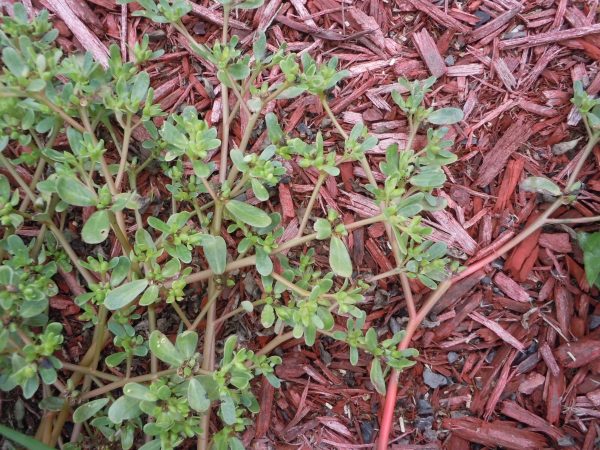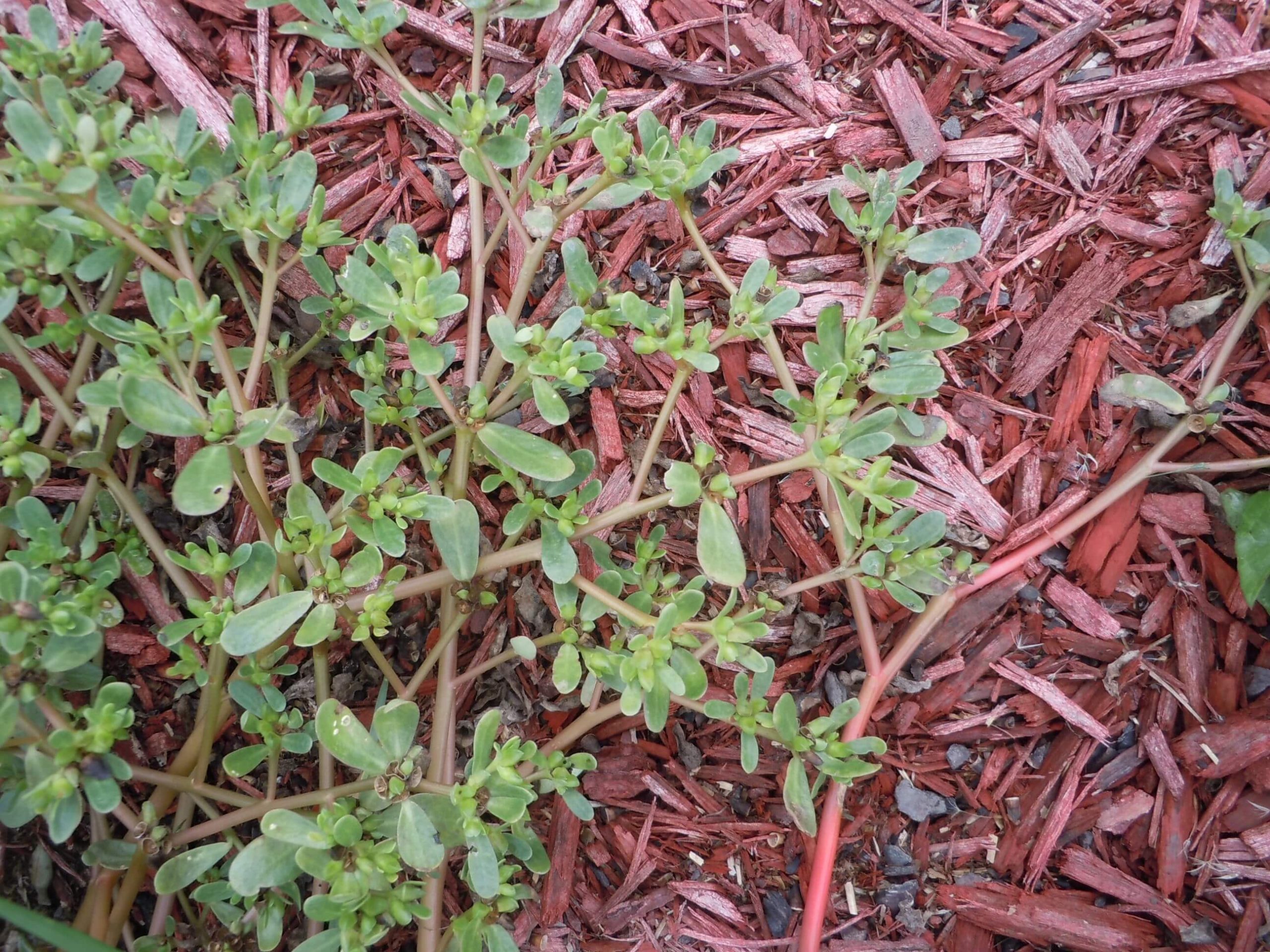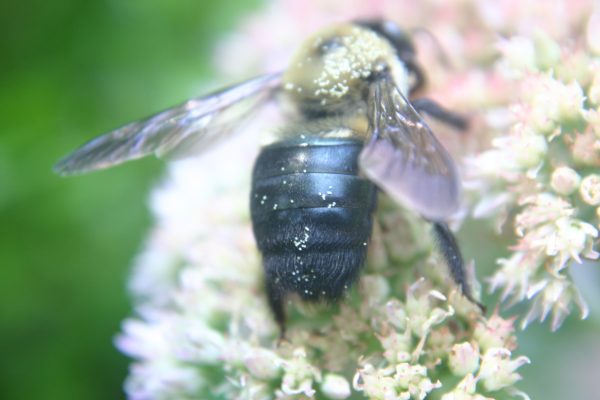Purslane – Control

Common purslane, Portulaca oleracea, is a weedy summer annual, invading vegetable gardens, bare areas, low-maintenance lawns, and ornamental plantings. It is particularly well adapted to the warm, moist conditions found in Georgia. Common purslane is edible, with a sweet, yet acid-like flavor.
It is a prostrate, succulent plant that often forms a dense mat. The reddish stems originate from a central rooting point, radiating out like spokes of a wheel. Small yellow flowers open only in sunshine. A single plant may produce 240,000 seeds, which may germinate even after 5 to 40 years. In late summer, flat mats of mature purslane can be turned over to reveal thousands of seeds on the soil surface.
Common purslane germinates in late spring when soil temperatures reach about 60°F.
The primary method of management for common purslane is prevention. It is such a prolific seeder that once it has become established it is difficult to control.
In home landscapes and gardens, this weed is generally managed by cultural means such as hand-weeding and mulching.
Common purslane is usually not a problem in healthy, well-established lawns. It is found mostly in weaker, poorly maintained turfgrass. Management for healthy, competitive turfgrass is the best method to deal with this weed problem in lawns.
Weed preventers that contain dithiopyr (click for sources) or pendimethalin (click for sources) are effective when applied in spring.
Weed killers that contain 2, 4-D (click for sources) are also effective. Weed killers are best when applied to the seedling stage; if applied to mature plants, control is erratic and seed set may have already occurred.














